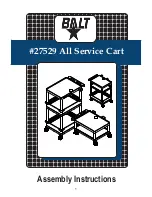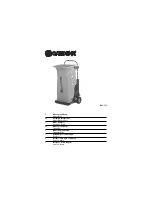
Page
19
of
28
Version 4.37 • CE • ALIS Tube Lamp
21 May 2019
6.
General points and good practices
1.
All electrical installation work
must
be carried out in accordance with all applicable local wiring regulations,
such as those published by CENELEC member organisations, or those covered by IEC60364. Failure to do so will
invalidate any associated Product Warranty.
2.
The ALIS Power Hub or Power Hub Panel
must
be earthed/grounded via a securely wired electrical connection.
It is not sufficient to rely solely on the bonded chassis alone.
3.
Ensure that all external cables are of a suitable cross-sectional diameter for the intended use. All external signals
carrying cable for uses such as 0/10v must be of a suitably screened/shielded type, with the screen/shield
connected to earth at the supply end only,
never
both ends.
4.
For the connection of external wires
always
use insulated ‘bootlace’ terminals, which provide a safe and good
connection, and which are well suited for the purpose.
5.
Splices and cable joints
must
be housed within a junction box, which has an IP rating suitable for the
environment. All cables
must
pass through suitable glands to maintain the rating.
6.
Never
use solid communication style wires such as telephone cable, even if making low voltage/current
connections, it is not suitable for any of the connectors within the ALIS range and will in time fail.
7.
Cable trunking and conduit. In certain instances, ALIS Bus cable may have to be routed through lidded electrical
wire carriers. Should this situation arise please
ensure
that all ends are sealed, and lids correctly fitted to stop
fauna (rodent) ingress.
8.
Installations should
never
use no more than the required length of ALIS Bus for each ALIS Power Hub. Remove
any excess end of line ALIS Bus cable at approximately 30cm (12 inches) past the final lamp.
9.
ALIS Bus cable should
never
be knotted or looped. it is also
important
to avoid sharp bends, returns,
and kinks. The minimum recommended bend diameter is 75mm (3 inches).
10.
Please
note
that poorly made electrical connections are often the main cause of equipment failure, which
in turn leads to livestock fatalities.
11.
If the ALIS Bus passes through a hole or aperture (metal or otherwise) a suitable insulating grommet or gland
must
be fitted.
12.
ALIS Bus cable should
never
be un-twisted, apart from through the lamp coupler.
13.
Under no circumstances
must the ALIS Bus be switched by any means, be that relay, contactor, isolator
or circuit breaker, unless parts are supplied by Greengage Lighting for that purpose. If this is attempted the
subsequent damage caused to the ALIS Power Hub will be irreparable and will not be covered by any Product
Warranty.
14.
Disconnecting the main electrical supply to the ALIS Power Hub as a means of regularly extinguishing the ALIS
Lamps
must
always be avoided.
15.
If switching the 0/10V control signal, the selection of the switching component is extremely important, please
adhere to the instructions on the relevant circuit diagram, obtainable from
Contact degradation can lead to the situation, particularly at low current levels, where the switching device
operates mechanically but effectively remains open circuit causing the ALIS lamps to remain at full brilliance.
.










































